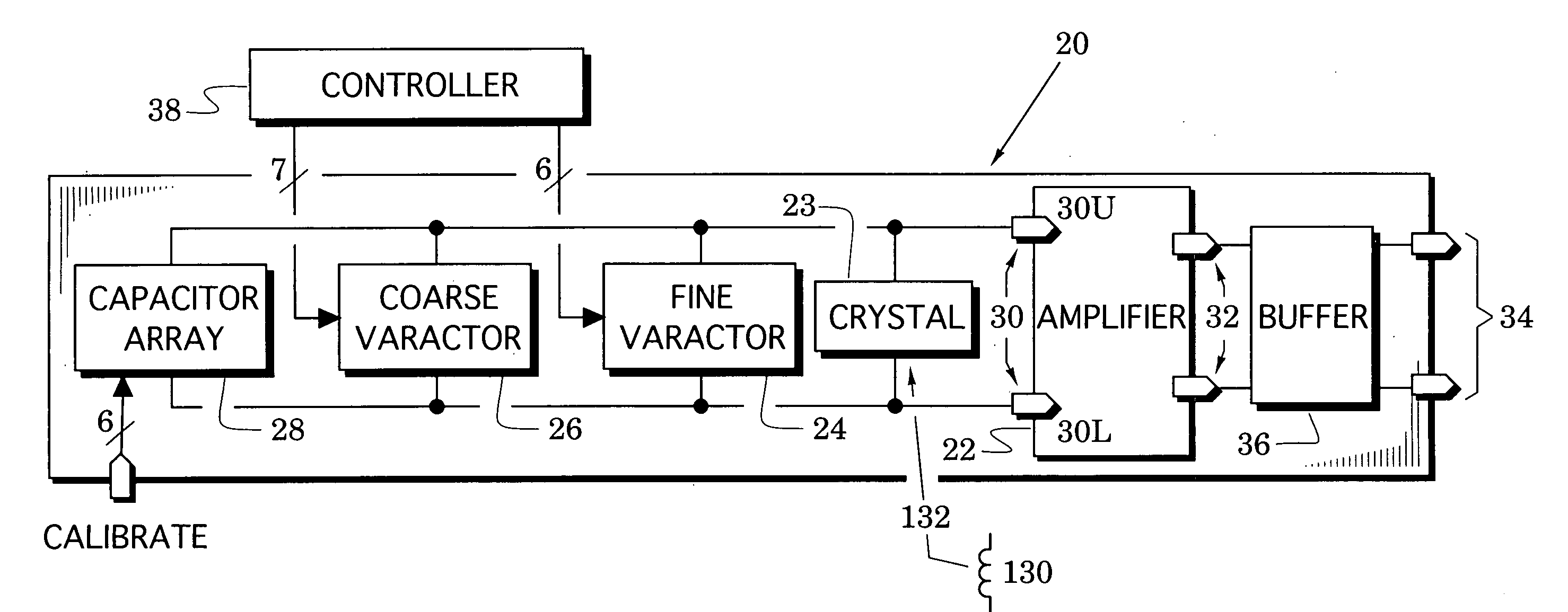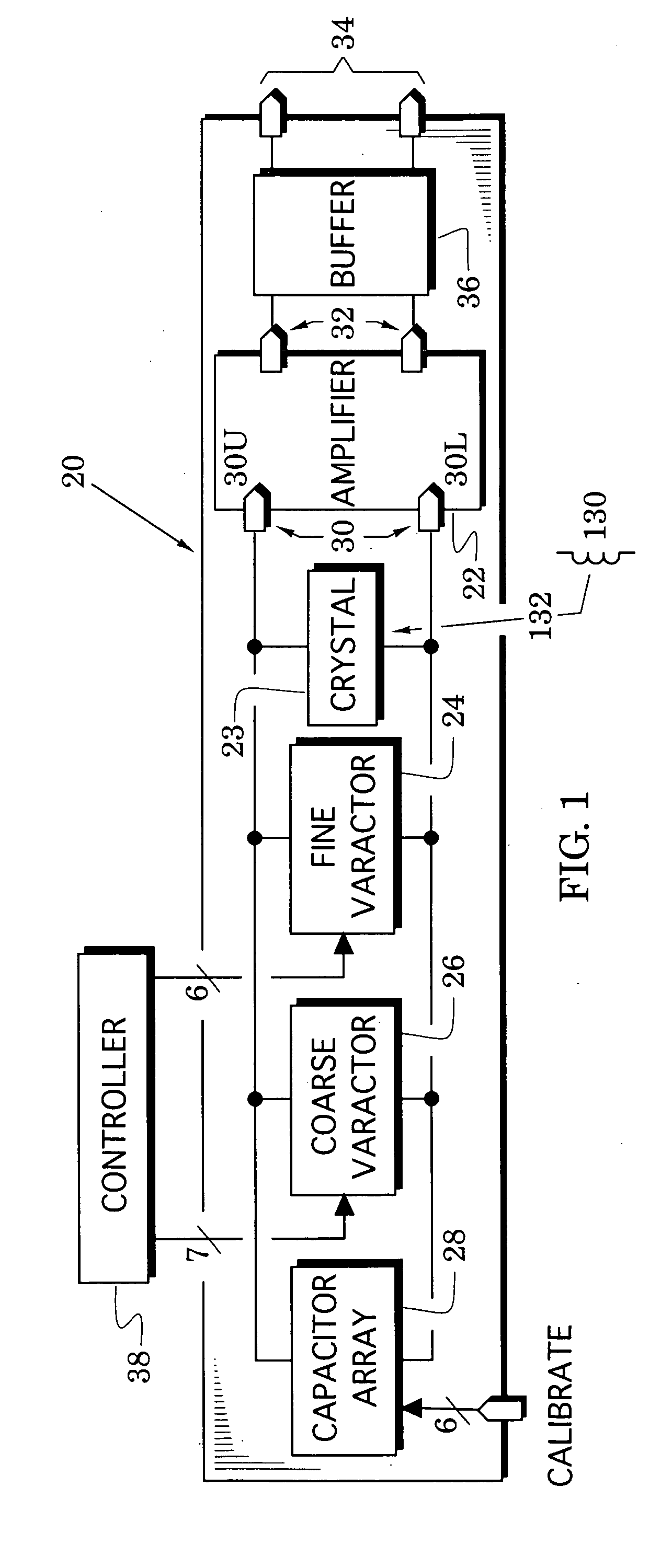Reference signal generators
a signal generator and reference signal technology, applied in oscillator generators, generating/distributing signals, pulse techniques, etc., can solve the problems of general failure to meet these more demanding requirements, and achieve the effect of improving the signal-to-noise performan
- Summary
- Abstract
- Description
- Claims
- Application Information
AI Technical Summary
Benefits of technology
Problems solved by technology
Method used
Image
Examples
Embodiment Construction
[0018] Reference signal generator embodiments are presented below which are particularly useful in a variety of wireless communication systems (e.g., cellular telephones) because they automatically adjust a reference signal's amplitude when that signal is delivered into system loads having various (and generally unknown) capacitances.
[0019] The amplitude is preferably adjusted downward from an initial maximum to a controlled amplitude that is sufficient for successful operation of the system elements that present the system loads. This downward adjustment insures that their operation is maintained throughout the amplitude leveling process. Spurious signal generation is thus inhibited, current drain is reduced, and the amplitude level of a crystal oscillator in the reference signal generator can be set independently to maximize its signal-to-noise performance.
[0020] These reference signal generator embodiments are shown in FIGS. 8-10B and their description is facilitated by precedi...
PUM
 Login to View More
Login to View More Abstract
Description
Claims
Application Information
 Login to View More
Login to View More - R&D
- Intellectual Property
- Life Sciences
- Materials
- Tech Scout
- Unparalleled Data Quality
- Higher Quality Content
- 60% Fewer Hallucinations
Browse by: Latest US Patents, China's latest patents, Technical Efficacy Thesaurus, Application Domain, Technology Topic, Popular Technical Reports.
© 2025 PatSnap. All rights reserved.Legal|Privacy policy|Modern Slavery Act Transparency Statement|Sitemap|About US| Contact US: help@patsnap.com



